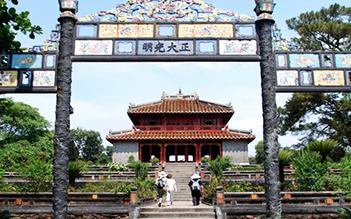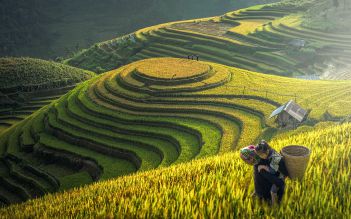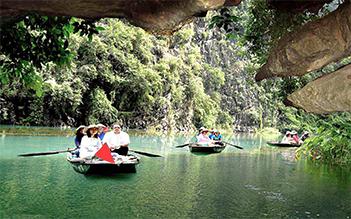Overview
Thien Mu pagoda of Hue ancient capital is famous and attractive to visitors by not only the mysterious myths but also an ancient beauty and romantic peace.
Where is Thien Mu pagoda?
The pagoda is located at the end of Kim Long street, on Ha Khe hill, on the northern bank of Perfume river, Huong Long ward. It is about 5 km west of Hue city center. Thien Mu pagoda is also called by another name, Linh Mu pagoda.
Thien Mu pagoda is one of the most famous spots in Hue. Not only does it enters the romantic poems of Hue but the pagoda is also considered a sacred temple in music, and the must-see scenes of any tourist when arriving in this ancient capital.

Thien Mu pagoda on the Perfume river
Built in 1601 by lord Tien Nguyen Hoang - the first Nguyen lord in Inside Land, Thien Mu pagoda can be considered the oldest temple in Hue.
Its name comes from a legend. It is said that, from a long time ago, the local people often saw an old lady wearing a red shirt, and a pair of green pants appear on the hill where the pagoda is located today and said "There will be a god coming to build the temple here for a good layer of earth." When she finished speaking, she disappeared.
After going to Thuan Hoa town, Lord Nguyen Hoang listened to the story and then built the pagoda, named it Thien Mu (A Woman from Heaven).
Attractions of Thien Mu pagoda
Phuoc Duyen tower

Phuoc Duyen tower
Approaching the temple, tourists will be attracted by the seven-storey octagonal tower named Phuoc Duyen (formerly Tu Nhan tower). Built in the mid-19th century by King Thieu Tri, the tower is to celebrate the 80th birthday of the King's grandmother.
Dai Hung palace
Passing through the 3-door gate is the 12 massive wooden sculptures of the fearsome guards of the temple. In the middle of the area is the Dai Hung palace - the main sanctuary of Thien Mu pagoda.
In here, the Buddha is worshiped with impressive sculptures and a giant bell, which is 2.5m high and 2 tons weighty, created in the early 18th century. Fragrant smoke fills the air here all day, making the blessing and praying peaceful, solemn.

The giant bell in Dai Hung palace
A building near the back of the complex possesses a national monument - the car carrying monk Thich Quang Duc to the crossroads of Phan Dinh Phung and Le Van Duyet in Saigon on June 11, 1963, where he burned himself as a way to oppose the Saigon regime's policy of avoiding religions in the region at that time.
Peaceful scenery
Coming to Thien Mu pagoda, visitors can enjoy both the landscape and typical traditional architecture of Hue pagodas.
Owning a high position, the pagoda will help visitors have the opportunity to admire the graceful curves of the Perfume river when they stand on the pagoda grounds.




